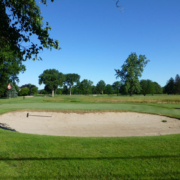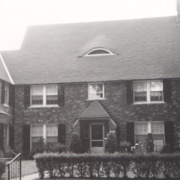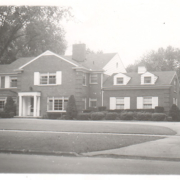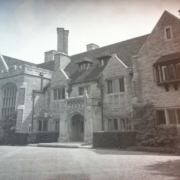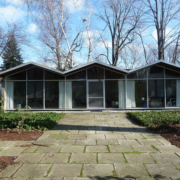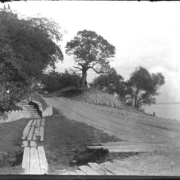Historical Architecture of Grosse Pointe – 18 Holes of History – the Golf Course at the Country Club of Detroit
One of the most popular venues in the Grosse Pointe communities is arguably the golf course at the Country Club of Detroit. Set on 212 acres the club is steeped in history, as are the lush greens and fairways of this prominent course.
Over the years it has been home to a number of prestigious national amateur championships, including the U.S Amateur championship, last played at the course in 1954, won by Arnold Palmer.

The original course first opened in 1927, having been designed by British golf architects Harry Colt and Charles Hugh Alison. Together, during the 1920’s, they designed a number of famous courses throughout the United States. One of their most respected designs is the Milwaukee Country Club in 1929, a course ranked by Golf Digest, in 2007, as one of the Top 50 golf courses in America. They were also responsible for the design of the course located at the Century Club (1927) in Purchase, New York, the course at Plum Hollow Country Club in Southfield, Michigan (1921), and, in conjunction with George Crump, the prestigious Pine Valley Golf Club, (1918), which was ranked the #1 Golf Course in the United States in April 2017. Source: Wikipedia.
Harry Colt was born in 1869. According to research on Wikipedia, during his career he designed over 300 courses (115 on his own) in North America, South America, Europe, Australia, Asia and Africa. Image courtesy of: bathgolfclub.org.uk
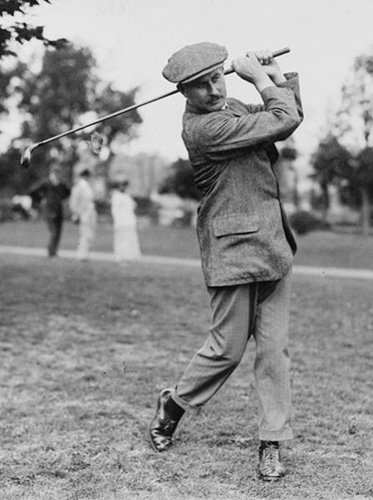
Based on research from bathgolfclub.org.uk – at the beginning of the 20th century golf courses had traditionally featured straight lines and sharp angles. Colt softened these lines, introduced curves and created visual challenges to tease and intrigue the golfer. You can read the full story of Harry Colt by clicking here.
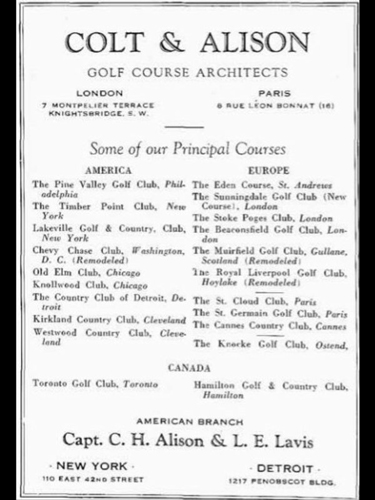
Charles Hugh Alison was born in 1883. A renowned British golf course architect, Alison spent a large part of his career working with Harry Colt. Prior to World War 1 Alison had created a couple of courses in the US, but was required to return to England to serve in the army. After the war had ended he left England and returned to America where he would become a respected course designer. During his nine years in the US he designed more than 20 new courses, and redesigning several others, before heading to Japan (in 1930) to continue his work, where he became extremely influential in course design. You can read the full story of Charles Hugh Allison by clicking here.
In 1952 noted architect Robert Trent Jones redesigned the course. Born in England in 1906 Jones immigrated to the United States with his family at the age of six.
While working as a caddy at the Country Club of Rochester he accepted a job at Sodus Bay Heights Golf Club, New York as a golf professional. During his career as a professional Jones studied at Cornell University ‘undergoing a customized course of study that would allow him to pursue his interest in golf course design’. Source: Wikipedia
Having graduated from Cornell, Jones went into business with Canadian golf architect, and co-founder of the American Society of Golf Course Architects – Stanley Thompson. During several years together they designed numerous courses in Canada. During the 1930’s Jones returned to the United States, and set out on his own. By the 1950’s he was one of the highest paid, and sort after course designers in the United States. During his prestigious career it is believed Robert Trent Jones designed or redesigned more than 500 golf courses – in 45 U.S. states and in 35 countries. Source: Wikipedia.
In 1996 Robert Trent Jones Jr. following in his fathers footsteps redesigned the course at the Club. A successful designer in his own right, and published author Robert Trent Jones Jr. has designed or remodeled more than 250 golf course’s throughout his career, and has also served as the president of the American Society of Golf Course Architects.
In 2011 Tom Doak of Renaissance Golf Design restored the course to its full glory.
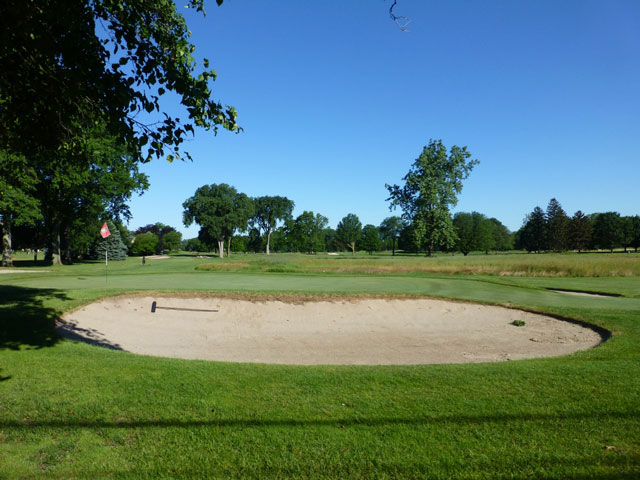
The 18 holes of history at the Country Club of Detroit make the club very special indeed, not only to the golfers of Grosse Pointe, but also to the state of Michigan. Along with the noted architects who created many superb homes in the community, we are also lucky enough to have had some of the best golf course architects in the history of the game come to the community to design our beautiful fairways.
Written by Katie Doelle
Copyright © 2017 Katie Doelle

